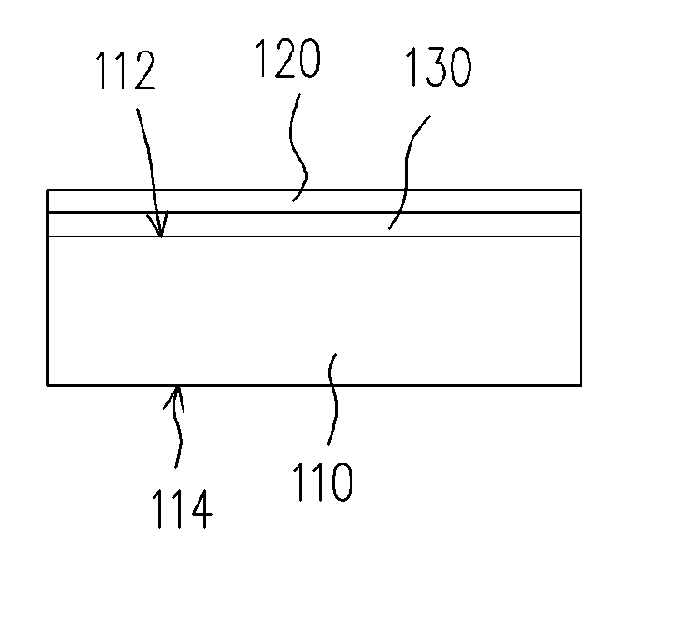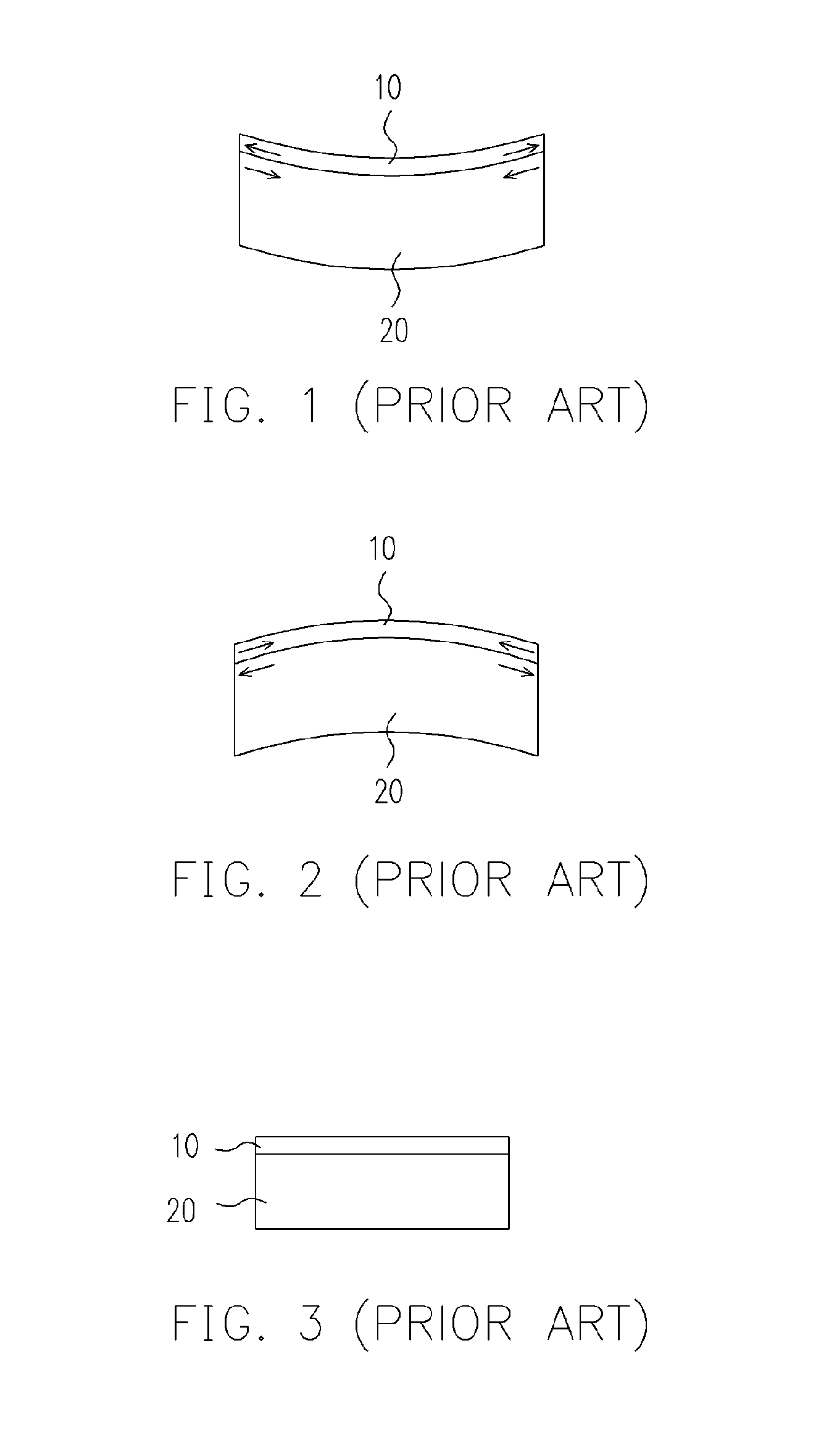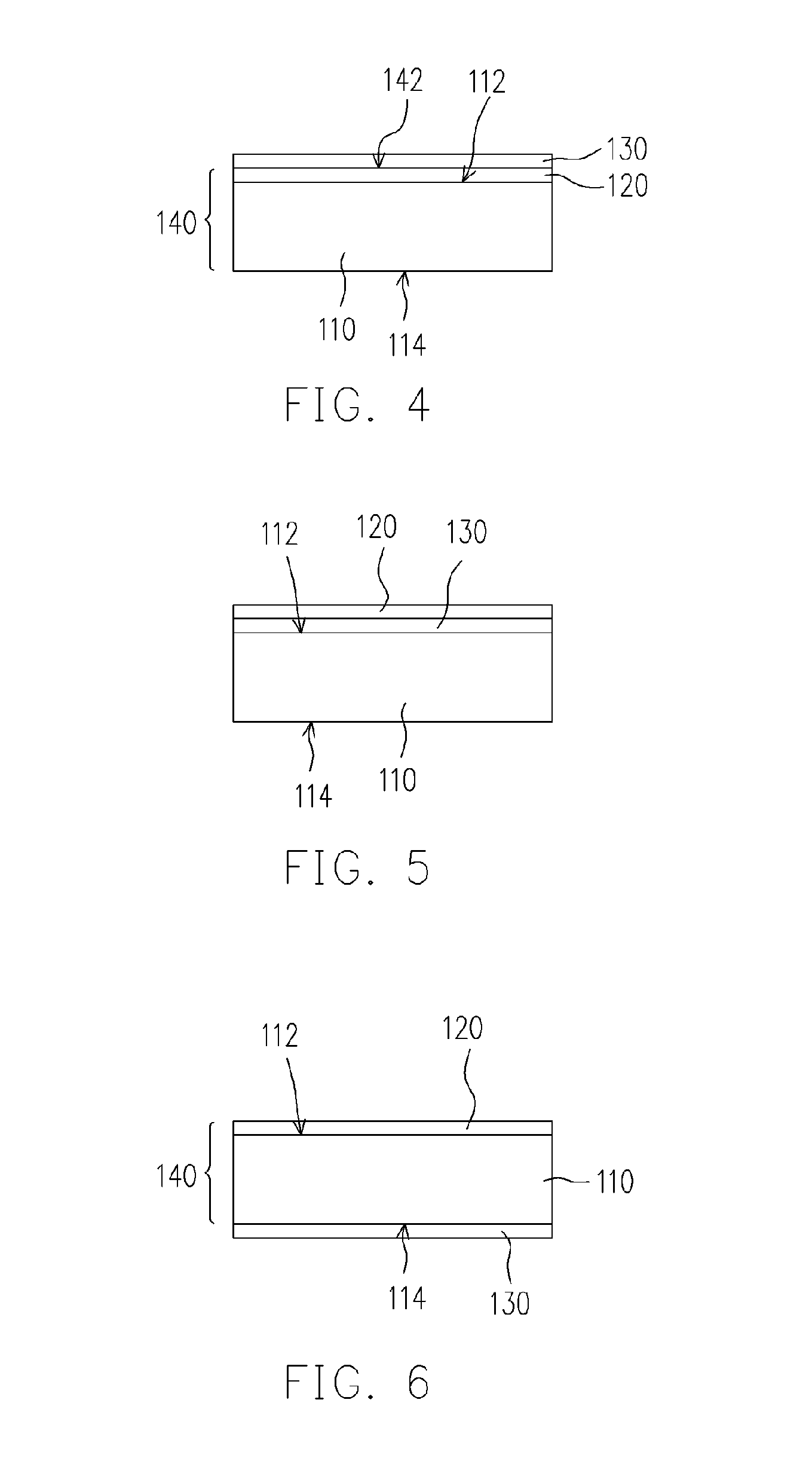Structure and method of thermal stress compensation
a technology of thermal stress compensation and structure, applied in the direction of heat measurement, instruments, transportation and packaging, etc., can solve the problems of voids or cracks on the surface of the film, overall appearance of the film and substrate will become warped, and the effect of reducing the stress accumulated
- Summary
- Abstract
- Description
- Claims
- Application Information
AI Technical Summary
Benefits of technology
Problems solved by technology
Method used
Image
Examples
embodiment 1
[0028] Referring to FIG. 4, it depicts the schematic view of a film used for stress compensation according to the first preferred embodiment of the present invention. A substrate 110 has a first surface 112, and a corresponding second surface 114. It is known that a film 120 is intended to be formed on the first surface 112 of the substrate 110. Provided that the coefficients of thermal expansion are, for example, 8×10−6 / ° C. and 6×10−6 / ° C., after the manufacture process of the film at high temperature is finished, and the temperature drops back to the room temperature (25° C.), the substrate 110 may endure a compressive stress, for example −1.62 Gpa, and the film 120 may endure a tensile stress. At this time, the substrate 110 and the film 120 may form a warping structure 140, as shown in FIG. 1.
[0029] Under this situation, in order to compensate the warping condition of this warping structure 140, a film 130 having a negative coefficient of thermal expansion is additionally form...
embodiment 2
[0033] Referring to FIG. 7, it depicts the schematic view of a film used for stress compensation according to a second preferred embodiment of the present invention. It is known that the stress endured by the substrate 210 at the working temperature of 100° C. is intended to be maintained at zero. Provided that the coefficient of thermal expansion of the substrate 210 is for example 7.5×10−6 / ° C., the substrate 210 appears to be under tensile stress at the working temperature, due to the stress of the film 220 formed on the substrate 210. Wherein, the value of tensile stress is for example 0.42 Gpa. And the film 220 may endure the compressive stress. At this time, the substrate 210 and the film 220 may form a warping structure 240, as shown in FIG. 2.
[0034] Under this situation, in order to compensate the warping condition of the warping structure 240, a film 230 having a negative coefficient of thermal expansion is additionally formed on the convex surface 242 of the warping struc...
embodiment 3
[0038] Referring to FIG. 10, it depicts the schematic view of the film used for compensation according to a third preferred embodiment of the present invention. The substrate 310 has a first surface 312, and a corresponding second surface 314. It is known that the film 320 is intended to be formed on the first surface 312 of the substrate 310. Provided that the coefficient of thermal expansion of the substrate 310 is for example 8.5×10−6 / ° C., and the coefficient of thermal expansion of the film 320 is for example 7.75×10−6 / ° C. the substrate 310 and the film 320 would form a warping structure 340 as shown in FIG. 2, when the temperature drops back to the room temperature (25° C.) after the manufacture process of the film at high temperature is finished.
[0039] Under this situation, in order to compensate the warping condition of this warping structure 340, a film 330 having a negative coefficient of thermal expansion is additionally formed on the concave surface of the warping stru...
PUM
| Property | Measurement | Unit |
|---|---|---|
| temperature | aaaaa | aaaaa |
| temperature | aaaaa | aaaaa |
| temperature | aaaaa | aaaaa |
Abstract
Description
Claims
Application Information
 Login to View More
Login to View More - R&D
- Intellectual Property
- Life Sciences
- Materials
- Tech Scout
- Unparalleled Data Quality
- Higher Quality Content
- 60% Fewer Hallucinations
Browse by: Latest US Patents, China's latest patents, Technical Efficacy Thesaurus, Application Domain, Technology Topic, Popular Technical Reports.
© 2025 PatSnap. All rights reserved.Legal|Privacy policy|Modern Slavery Act Transparency Statement|Sitemap|About US| Contact US: help@patsnap.com



